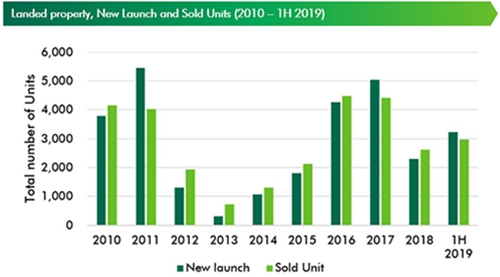Vietnam’s Economic Backdrop Quarterly Reports | Q2 2019
Growth of Vietnam’s economy stayed strong:
Amid the prevailing global high uncertainty and growth slowing down, Vietnam’s economy still achieved stable growth with 6.8% in 1H 2019. As of Q2 2019, the GDP growth reached 6.7%, slightly lower than the Q2 2018 rate yet still higher than the growth of the second quarter during the 2011-2017 period.
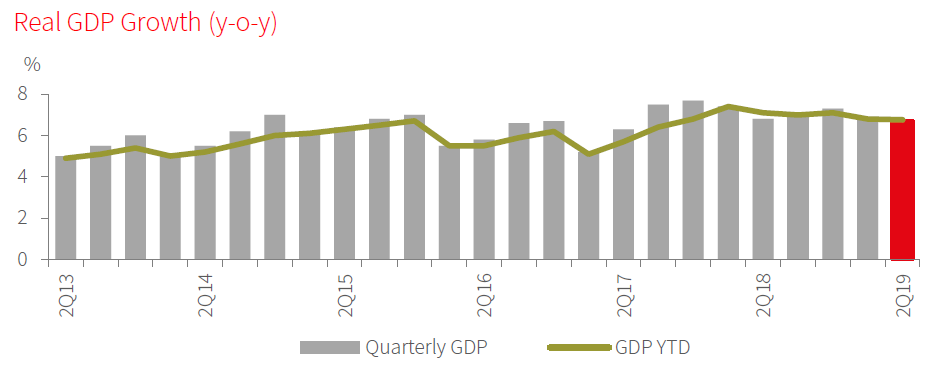
Robust retail turnover and international arrivals:
As of 1H 2019, the total retail sales of consumer goods and services hit a considerable growth of 11.5% compared to the previous year. When it comes to the total number of international tourist arrivals, Vietnam still remained as a favourable tourism destination with 8.48 million visitors for the 1H 2019, an increase of 7.5% y-o-y, according to the Vietnam National Administration of Tourism. Visitors from Asia still accounted for the biggest proportion, of which China, South Korea and Japan took the lead among the nationals coming to Vietnam.
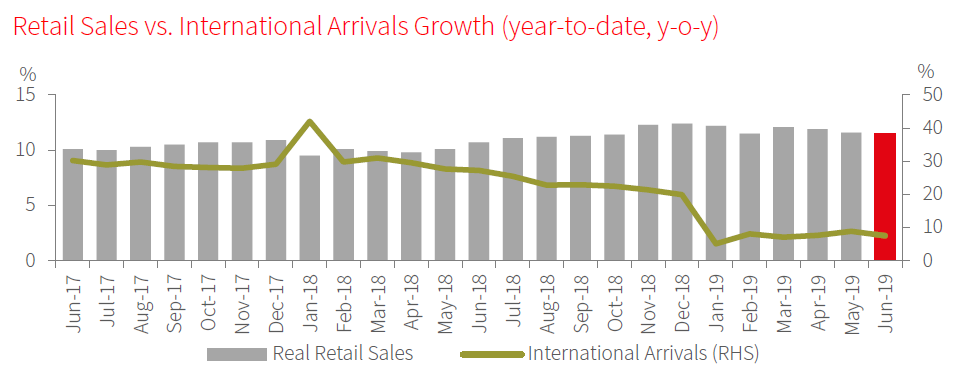
Vietnam’s FDI demonstrated new growth:
The total FDI pledged to the country was nearly USD 18.47 billion in 1H 2019, equivalent to 90.8% of the level recorded the same period last year. Specifically, there were 1,723 newly registered projects worth USD 7.41 billion, increasing 62.8% y-o-y. FDI disbursement was recorded at USD 9.1 billion, an increase of nearly 8% y-o-y. Among the 19 investment industries, processing and manufacturing remained the most attractive sector, recording USD 13.15 billion, equivalent to 71.2% of the total capital. Real estate activity and the wholesale, retail trade sectors followed at second and third with USD 1.32 billion and USD 1.05 billion, respectively. Hong Kong took the lead among 95 countries investing in Vietnam in 1H 2019, with a total of USD 5.3 billion, accounting for 28.7% of the FDI. This was followed by South Korea with USD 2.73 billion and China with USD 2.2 billion.
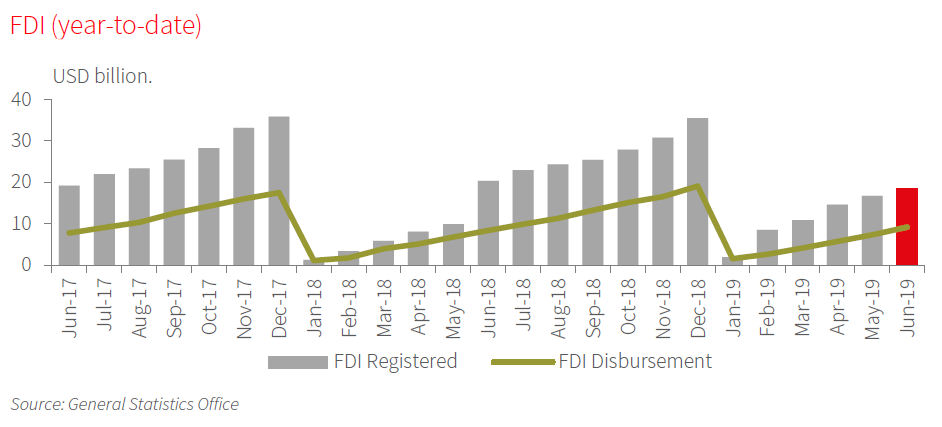
CPI remained stable:
Vietnam’s average CPI increased approximately 3% in Q2 2019 and 3% for 1H 2019 against the same period last year, which is the lowest six-month average increase in the last three years and still under the government’s control. The price for the first six months of 2019 climbed mainly owing to:
- Demand for food and foodstuff increased 5.4%, of which pork meat increased by 14.9%;
- The price of construction materials increased by 1.99%;
- Stationery price for 2019-2020 increased by 2.57%;
- The price of electricity increased by 5.84%.
Compared to the same period in 2018, CPI keeping the pace at a stable rate. It's still possible for the CPI to increase for the remaining two quarters of 2019 to achieve the National Assembly's target at roughly 4%.
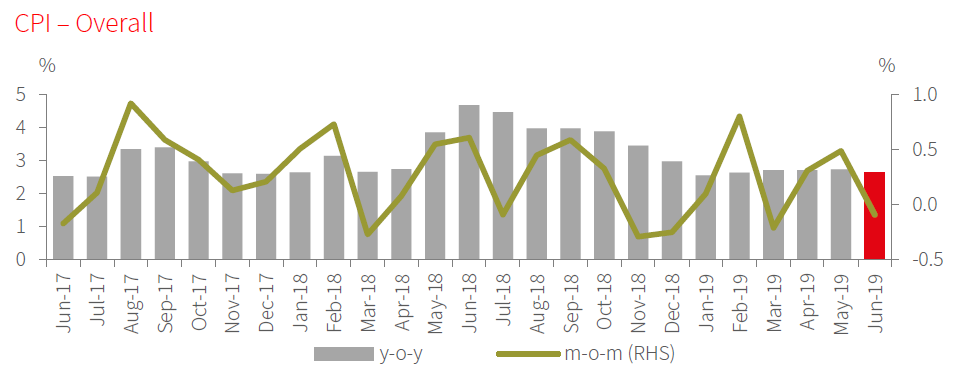
According to the General Statistics Office, the abnormal movements of the livestock industry driven by African swine fever virus kept spreading widely, causing huge difficulties. Within the general growth, the industrial and construction sectors increased at 9.14% – the leading rate among the sectors. The service sector and the agro-forestry-fisheries sector kept their momentum with upsurges of 6.85% and 2.19%, respectively. The year-end growth target of 6.6% - 6.9% in 2019 is feasible thanks to manufacturing and processing sector potentials, as it does not increase as fast as 2018, but still maintains a relatively high level.
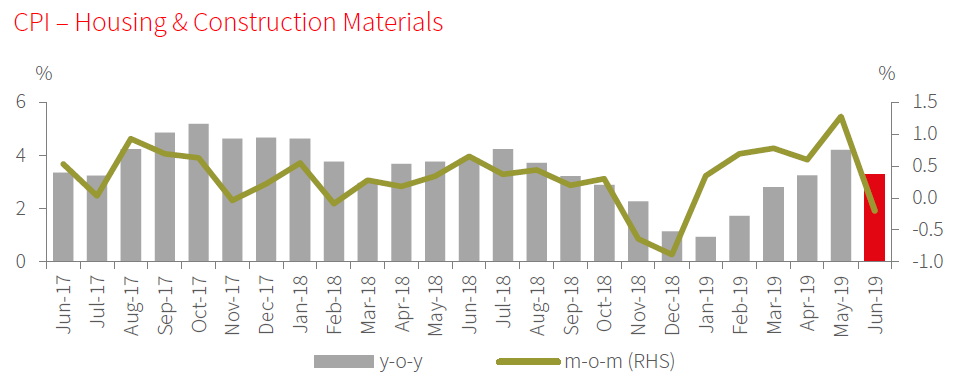
Vietnam’s total import-export turnover reached new record:
With USD 245.48 billion, total import-export turnover of Vietnam reached the highest level of six months ever. Although the trade balance is still in deficit, Vietnam only recorded a trade deficit of USD 34 million in 1H 2019, showing that the trade balance is gradually equalising. The United States and the EU stayed as the two largest export markets of Vietnam, contributing USD 27.5 billion and USD 20.6 billion, respectively. The key export products comprised phones and devices, electronic appliances, garments and textile products. Meanwhile, China and South Korea remained the key importers with total imports of USD 36.8 billion and USD 22.9 billion, respectively, corresponding to metals, garments, machinery, electronic equipment, computers and mobiles. In Q2 2019, the estimated export revenues reached USD 63.86 billion, a significant increase of 9.3%, whereas the import value hit USD 65.31 billion, up 12.9% compared to same period last year.

Strong surge in the number of newly registered enterprises:
In 1H 2019, roughly 67,000 enterprises were newly established. The registered capital hit a new level at VND 12.8 billion per newly established enterprise, up 27.7%. During 1H 2019, there were 4,000 new businesses registered in the real estate sector, growing 22.2% y-o-y and accounting for 6% of the total newly registered enterprises. Additionally, there were 21,800 enterprises that stopped operations and were waiting for dissolution procedures. Of these, 11,000 enterprises had their business registration certificates revoked under the 2018 data standardisation programme to eliminate businesses that have been established but no longer operate. There were 38,500 enterprises newly established in Q2 2019, up 2.0% in terms of the number of companies and 30.8% in terms of the registered capital in the same period in 2018.
Related news

Ho Chi Minh City Real Estate Market Quarterly Reports | Q3 2021

Ho Chi Minh City Real Estate Market Quarterly Reports | Q2 2021
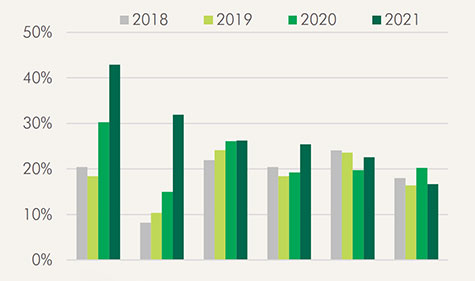
Ho Chi Minh City Real Estate Market Quarterly Reports | Q1 2021
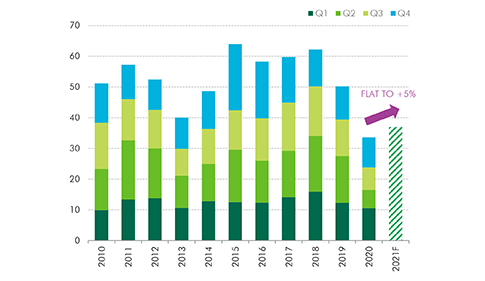
Ho Chi Minh City Real Estate Market Quarterly Reports | Q4 2020
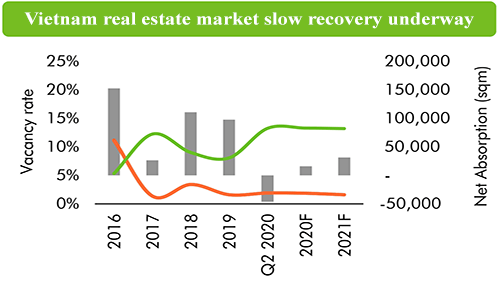
Ho Chi Minh City Real Estate Market Quarterly Reports | Q3 2020

Ho Chi Minh City Real Estate Market Quarterly Reports | Q2 2020
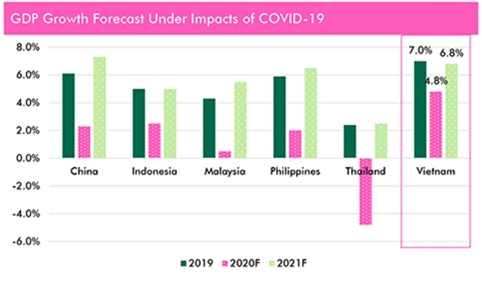
Ho Chi Minh City Real Estate Market Quarterly Reports | Q1 2020
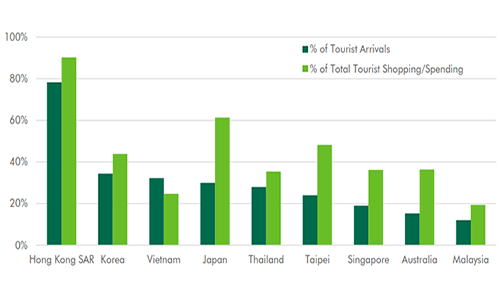
Ho Chi Minh City Real Estate Market Quarterly Reports | Q4 2019
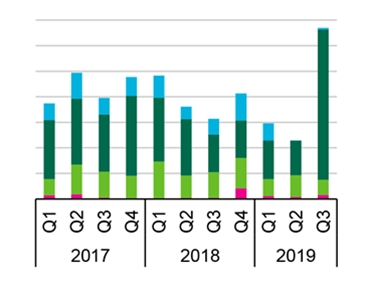
Ho Chi Minh City Real Estate Market Quarterly Reports | Q3 2019
